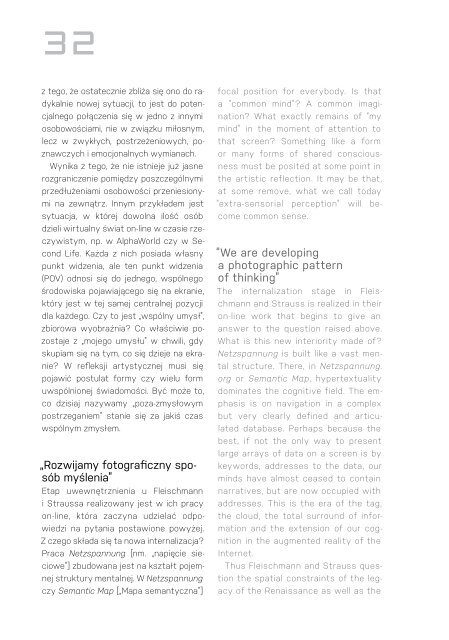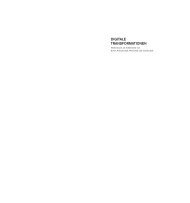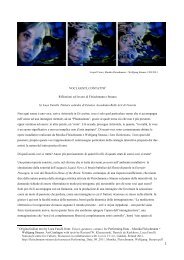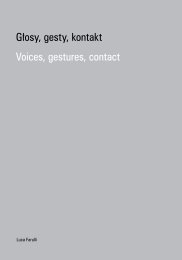Performing Data | Monika Fleischmann + Wolfgang Strauss
Performing Data is a review of Monika Fleischmann´s and Wolfgang Strauss´artistic body of work and a catalogue of their exhibition in Poland 2011. It presents works from Virtual Reality (Home of the Brain) up to Mixed Reality (Murmuring Fields) from Fluid Interface (Liquid Views) up to Floating Interface (Medienfluss) and texts by Ryszard W. Kluszczynski, Derrick de Kerkhove, Luca Farulli. Monika Fleischmann and Wolfgang Strauss from the German Fraunhofer research institute show us an intersection of the body and immaterial digital data. Immersion in data flow causes productive moments of disturbance and suspension, and consequently – a feeling of real physical presence. Fleischmann, Monika; Strauss, Wolfgang: Performing Data | Performowanie danych. National Centre for Culture, Warszawa 2011 in collaboration with Laznia CCArt, Gdańsk, Poland 2011 ISBN 978-83-61587-55-2 (en/pl) http://artline-southbaltic.eu/de/event/performing-data/
Performing Data is a review of Monika Fleischmann´s and Wolfgang Strauss´artistic body of work and a catalogue of their exhibition in Poland 2011. It presents works from Virtual Reality (Home of the Brain) up to Mixed Reality (Murmuring Fields) from Fluid Interface (Liquid Views) up to Floating Interface (Medienfluss) and texts by Ryszard W. Kluszczynski, Derrick de Kerkhove, Luca Farulli.
Monika Fleischmann and Wolfgang Strauss from the German Fraunhofer research institute show us an intersection of the body and immaterial digital data. Immersion in data flow causes productive moments of disturbance and suspension, and consequently – a feeling of real physical presence.
Fleischmann, Monika; Strauss, Wolfgang: Performing Data | Performowanie danych. National Centre for Culture, Warszawa 2011 in collaboration with Laznia CCArt, Gdańsk, Poland 2011 ISBN 978-83-61587-55-2 (en/pl) http://artline-southbaltic.eu/de/event/performing-data/
Create successful ePaper yourself
Turn your PDF publications into a flip-book with our unique Google optimized e-Paper software.
z tego, że ostatecznie zbliża się ono do radykalnie<br />
nowej sytuacji, to jest do potencjalnego<br />
połączenia się w jedno z innymi<br />
osobowościami, nie w związku miłosnym,<br />
lecz w zwykłych, postrzeżeniowych, poznawczych<br />
i emocjonalnych wymianach.<br />
Wynika z tego, że nie istnieje już jasne<br />
rozgraniczenie pomiędzy poszczególnymi<br />
przedłużeniami osobowości przeniesionymi<br />
na zewnątrz. Innym przykładem jest<br />
sytuacja, w której dowolna ilość osób<br />
dzieli wirtualny świat on-line w czasie rzeczywistym,<br />
np. w AlphaWorld czy w Second<br />
Life. Każda z nich posiada własny<br />
punkt widzenia, ale ten punkt widzenia<br />
(POV) odnosi się do jednego, wspólnego<br />
środowiska pojawiającego się na ekranie,<br />
który jest w tej samej centralnej pozycji<br />
dla każdego. Czy to jest „wspólny umysł”,<br />
zbiorowa wyobraźnia? Co właściwie pozostaje<br />
z „mojego umysłu” w chwili, gdy<br />
skupiam się na tym, co się dzieje na ekranie?<br />
W refleksji artystycznej musi się<br />
pojawić postulat formy czy wielu form<br />
uwspólnionej świadomości. Być może to,<br />
co dzisiaj nazywamy „poza-zmysłowym<br />
postrzeganiem” stanie się za jakiś czas<br />
wspólnym zmysłem.<br />
„Rozwijamy fotograficzny sposób<br />
myślenia”<br />
Etap uwewnętrznienia u <strong>Fleischmann</strong><br />
i <strong>Strauss</strong>a realizowany jest w ich pracy<br />
on-line, która zaczyna udzielać odpowiedzi<br />
na pytania postawione powyżej.<br />
Z czego składa się ta nowa internalizacja?<br />
Praca Netzspannung [nm. „napięcie sieciowe”]<br />
zbudowana jest na kształt pojemnej<br />
struktury mentalnej. W Netzspannung<br />
czy Semantic Map [„Mapa semantyczna”]<br />
focal position for everybody. Is that<br />
a “common mind”? A common imagination?<br />
What exactly remains of “my<br />
mind” in the moment of attention to<br />
that screen? Something like a form<br />
or many forms of shared consciousness<br />
must be posited at some point in<br />
the artistic reflection. It may be that,<br />
at some remove, what we call today<br />
“extra-sensorial perception” will become<br />
common sense.<br />
“We are developing<br />
a photographic pattern<br />
of thinking”<br />
The internalization stage in <strong>Fleischmann</strong><br />
and <strong>Strauss</strong> is realized in their<br />
on-line work that begins to give an<br />
answer to the question raised above.<br />
What is this new interiority made of?<br />
Netzspannung is built like a vast mental<br />
structure. There, in Netzspannung.<br />
org or Semantic Map, hypertextuality<br />
dominates the cognitive field. The emphasis<br />
is on navigation in a complex<br />
but very clearly defined and articulated<br />
database. Perhaps because the<br />
best, if not the only way to present<br />
large arrays of data on a screen is by<br />
keywords, addresses to the data, our<br />
minds have almost ceased to contain<br />
narratives, but are now occupied with<br />
addresses. This is the era of the tag,<br />
the cloud, the total surround of information<br />
and the extension of our cognition<br />
in the augmented reality of the<br />
Internet.<br />
Thus <strong>Fleischmann</strong> and <strong>Strauss</strong> question<br />
the spatial constraints of the legacy<br />
of the Renaissance as well as the







